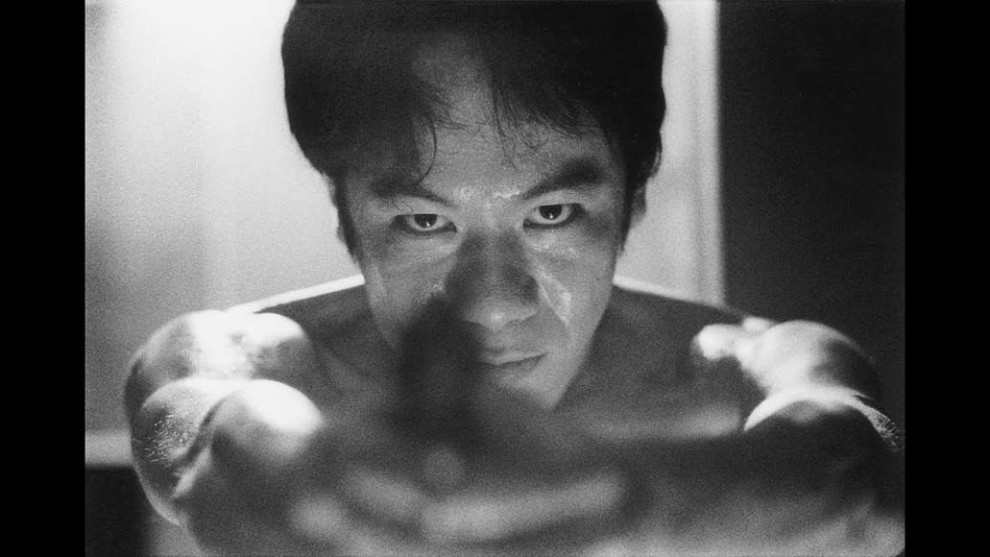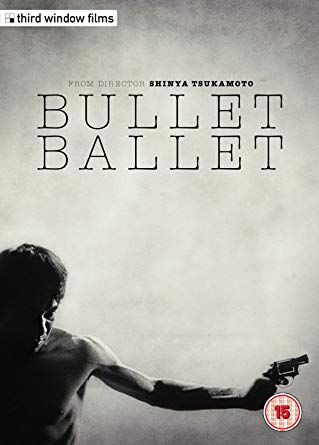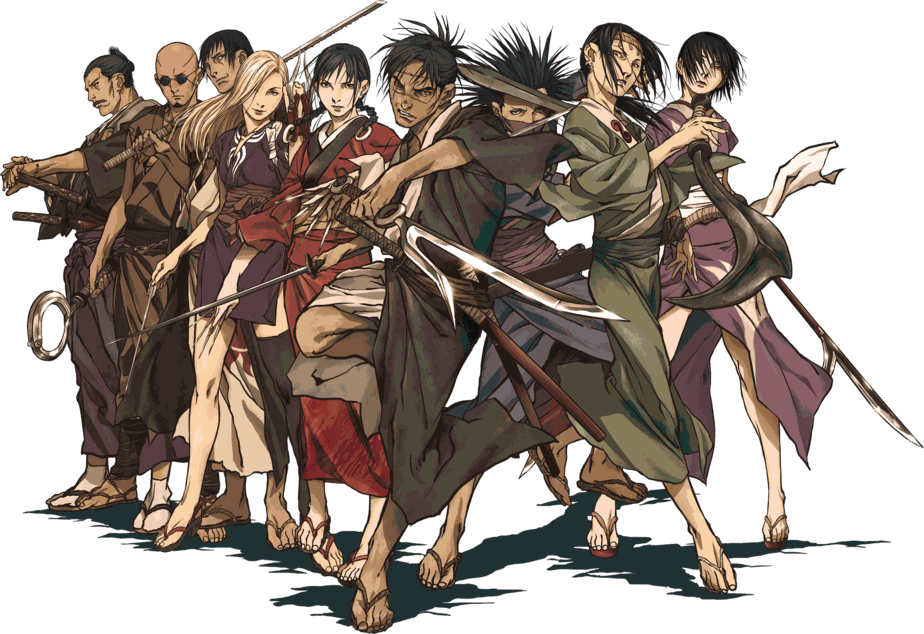“Pull the trigger!”
“Do it yourself.”
The link between the physical body and its environment has always accompanied Shinya Tsukamoto's body of work. Like the Moloch evoked in the poems by Beatnik poet Allen Ginsberg, the city is a maze for the individual, a dangerous entity which in return influences the body and the mind of the citizen, a relation Tsukamoto explored in the “Tetsuo”-films his short film “Haze” and works like “A Snake of June”. His often male characters walk through a hostile setting and in order to adapt and to survive, they have to change too, physically as well as spiritually.
In theory, these concepts sound like mere intellectual scenarios, but they are much more than that. One of those experiences, which ultimately inspired “Bullet Ballet”, was when Tsukamoto was robbed by a group of juvenile delinquents on his way to a train station. Threatened by their presence, he could only helplessly witness the act taking place, a state of mind he would implement in the construction of the protagonist of the film. During his research, he found out more about so-called “teamsters”, he states in an interview, who are mostly young people leading a normal life during day and who engage in violent or criminal activities at night. In the end, these are the “children” of the Moloch of modern urbanity, a generation he wanted to know more about and understand.
Buy This Title
At the beginning of the film, the life of Goda (Tsukamoto), a director for TV commercials, is shattered as he comes home one evening. In shock, he hears the news of his girlfriend's suicide and, even more shockingly, that she did it by shooting herself with a firearm. Since Goda does not own a gun, he wants to find out where the weapon came from, who sold or gave it to her and, most importantly, why she killed herself.
On his many journeys through the streets and back alleys of Tokyo, he meets Chisato (Kirina Mano), a young girl connected to a gang led by gangster and drug dealer Idei (Tatsuya Nakamura). Although he is repeatedly beaten up by Idei's men, especially his right-hand man Goto (Takahiro Murase), he refuses to give up bringing him closer and closer to a world of crime and violence.

As attentive followers of the news have seen, gun ownership is once a huge legal and social taboo in Japan society. The recent arrest of director Toshiaki Toyoda (“Blue Spring”) shows the extent an allegation such as this can ruin a person's reputation and will result in a long line of legal battles until the damage is somewhat restored (Toyoda was arrested based on such allegations which proved to be false in the end). Nevertheless, the image of the gun as an extension of the body and the individual holds great power, suggesting a sense of strength and even attraction. In a sequence reminiscent of Martin Scorsese's “Taxi Driver”, Goda plays with the gun he has finally acquired in front of a bathroom mirror.
However, “Bullet Ballet” – as the title's pun already suggests – goes beyond the mere provocative value of such images. The nature of the firearm as a means of wish-fulfillment is the ultimate expression of a society defined by apathy and an omnipresent death wish depicted in the various scenes of violence, abuse and estrangement found in the film. As one of the juvenile characters talks about his plans for the day, he almost playfully mentions he will further study for his exams while he will also make sure to bring “a bat with nails” to the fight with a rival gang at night. The thin line between life and death has become blurred in order to experience something beyond the numbing concrete of the city.

Fittingly, Tsukamoto has shot his “Bullet Ballet” in grainy black and white, emphasizing the numbness his characters feel. Holding a weapon is the last transformative moment, the link between the individual and the cold metal bringing forth death and destruction. In the end, the violence in the film is meaningless, almost pointless, a source of absurd entertainment defining the juvenile characters in “Bullet Ballet” as descendants of the brutal, sadist gangs in Stanley Kubrick's “A Clockwork Orange”.
Ultimately, “Bullet Ballet” is a film portraying a culture of repression and violence, a foundation for apathy and feelings of helplessness. While its formal structure and the industrial score by Chui Ishikawa show the link of this work to, for example, “Tetsuo: The Iron Man”, “Bullet Ballet” has nothing of its freeing humor. Considering the condition it portrays, there is not reason to include any of it in the end since the loss of control inherent in every frame of this masterful film underlines the urgency of this director's observations and thoughts.
Sources:
Mes, Tom (2005) Iron Man. The Cinema by Shinya Tsukamoto. FAB Press.
An interview with the director referred to in the review is included in the Blu ray release of the film by Third Window.
















